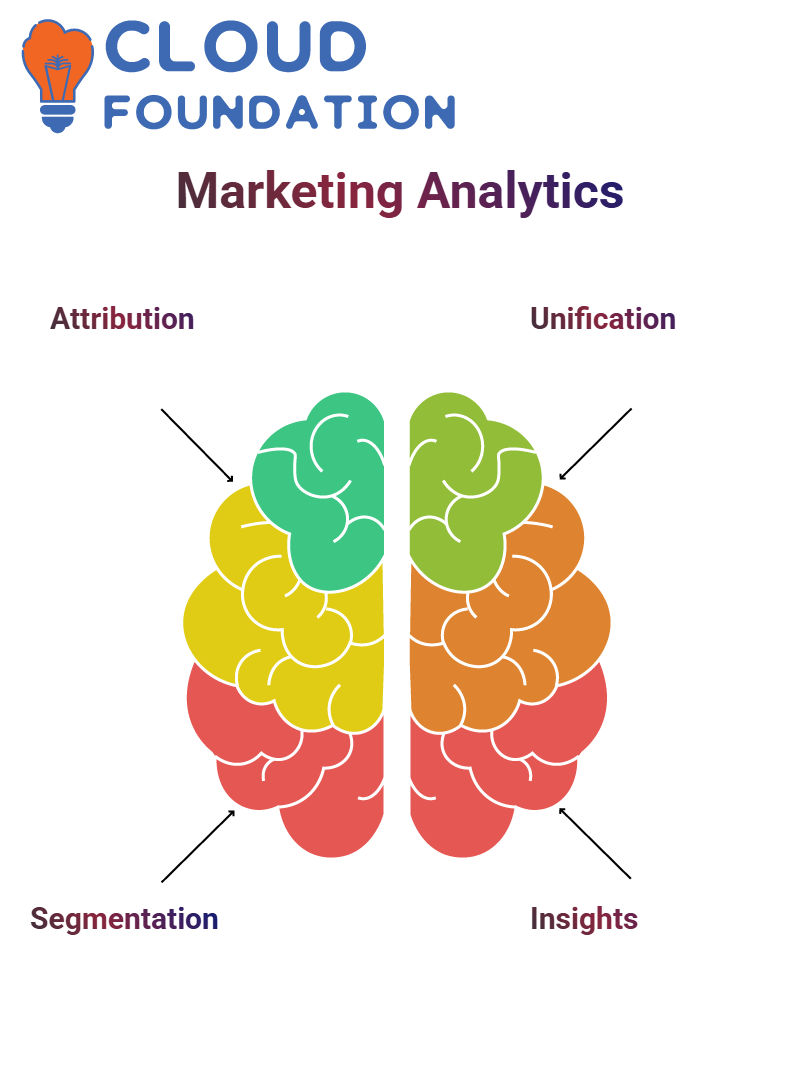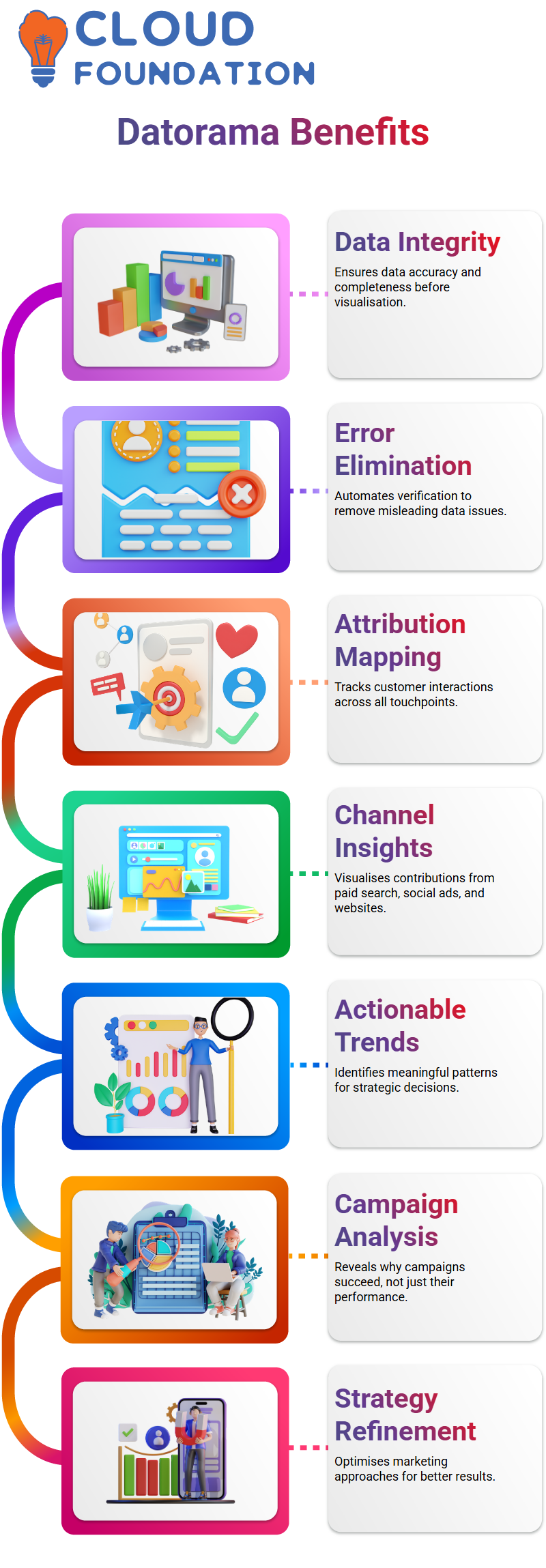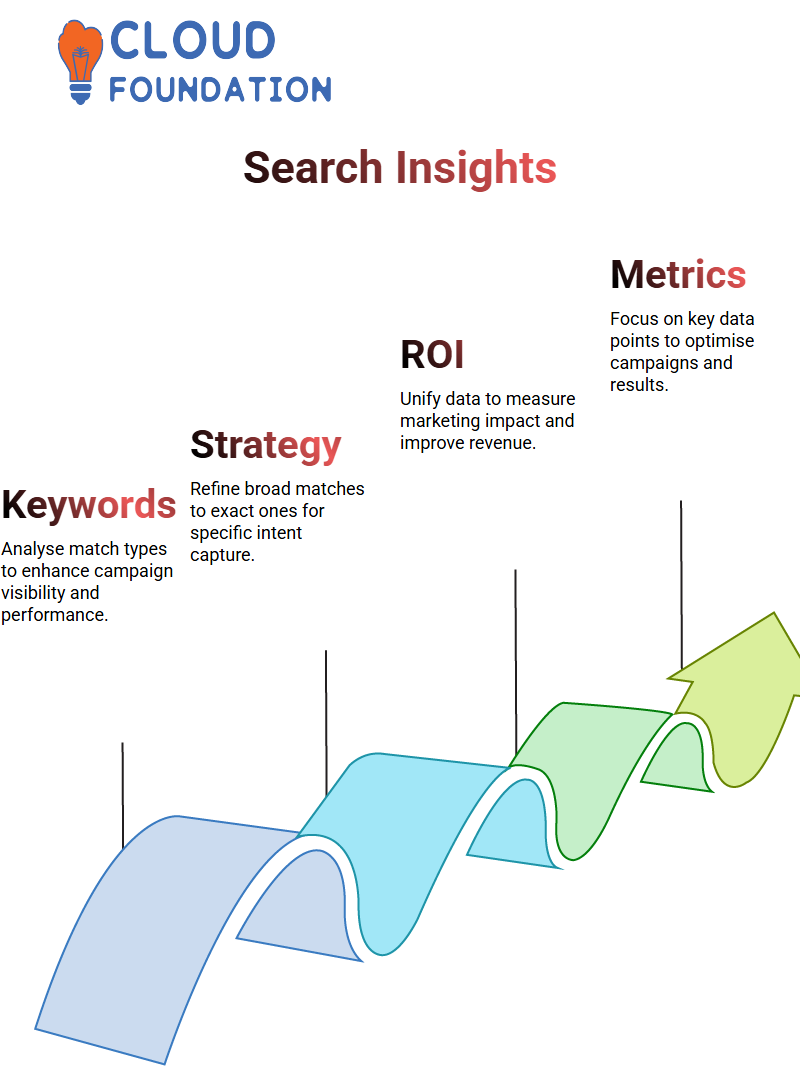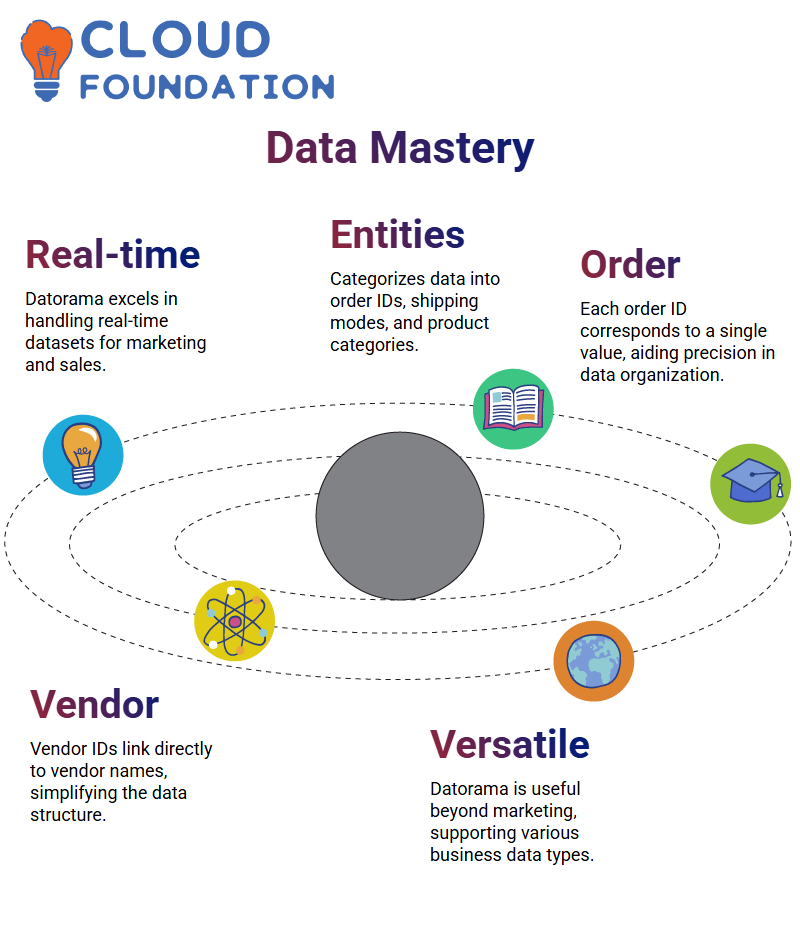Why Marketing Cloud Intelligence in Modern Marketing?
Understanding Marketing with Datorama
Marketing has evolved significantly over time. Once limited to simple campaigns and visual displays, marketing now involves data-driven strategies with audience targeting at their core, and effective campaigns are deployed accordingly.
Measuring success wasn’t always clear-cut either.
Early in my career, marketers relied solely on impressions and clicks as measures of performance.
There was no structured way to track engagement or understand attribution-until Datorama entered the equation.
Datorama transformed how marketers measured success.

Why Datorama is Essential for Modern Marketing
Datorama delivers real-time analytics to enable marketers to maximise the efficiency and success of their campaigns in an ever-evolving digital landscape.
Beyond measuring performance, Datorama fosters growth through impact analysis and loyalty tracking, ultimately supporting marketers’ goals of running more efficient and successful campaigns.
Datorama enables brands to gain a deeper understanding of their customers, refine their messaging, and maximise return on investment, giving marketers an edge by helping them make more intelligent decisions backed by data.
The Role of Datorama in Marketing Intelligence
Marketing strategies have undergone significant changes over the years, and Datorama is at the heart of this development.
From advertising and content experience management to sales data management and management services, Datorama streamlines every element of this complex ecosystem.
Data analytics provides businesses with tools that help create segmentation and attribution models by leveraging an abundance of available information.
Instead of being overwhelmed by unnecessary details, marketers can now focus on what truly matters – actionable insights.
Why Marketers Rely on Datorama for Campaign Optimisation
Knowledge is power in digital marketing, and Datorama makes this easy by tracking campaign performance across various channels with zero manual intervention required to monitor them.
Datorama consolidates data sources to account for each click, impression and engagement that takes place across a site or campaign.
Furthermore, Datorama simplifies API integration, allowing marketers to avoid spending hours manually configuring multiple sources.
How Datorama Transforms Data
Datorama provides us with an easier way to handle marketing analytics. Gone are the days of dealing with fragmented channels.
Previously, brands would spend their budget across search, social, and programmatic advertising without clear visibility into which efforts were practical and which were not.
Datorama streamlines everything under a single umbrella, covering campaign performance, audience segmentation, and budget allocation, all while helping marketers make informed decisions with ease.
Attribution and Segmentation with Datorama
Attribution is a critical aspect of marketing analytics.
In the past, last-touch attribution was widely practised by marketers who awarded credit to any click that occurred before conversion as evidence of success.
However, this approach overlooked the necessary steps along their journey that may have led them to reach that decision point.
Datorama helps marketers analyse the entire funnel by tracking engagement across multiple channels.

This ensures that every touchpoint, from initial brand recognition through to purchase, is considered.
Data Unification and Integration in Datorama
Marketing teams often struggle to unify data cohesively generated across various platforms. Datorama helps marketing teams overcome this difficulty by seamlessly combining data sources.
Datorama enables businesses to transform raw data into actionable insights quickly and effectively, whether that involves analysing paid and organic performance or the impact of offline media.
Datorama ensures its marketing intelligence remains comprehensive.
How Datorama Improves Data Quality
Data integrity is of utmost importance. Before moving on to visualisation tools such as Power BI or Tableau, Datorama conducts rigorous quality controls on our clients’ data before handing it off for visualisation.
Datorama makes the verification process effortless, ensuring marketers receive accurate data without being misled.
Now you can focus on insights rather than worrying about inconsistent datasets.
Datorama Transforms Attribution and Customer Journeys
Attribution modelling is at the core of marketing effectiveness.
Datorama ensures that every interaction, from customer awareness to customer retention, is carefully tracked and measured for maximum marketing ROI.

Datorama provides businesses with an invaluable way to visualise contributions from each channel, paid search, social ads or website visits, so that informed, data-driven decisions are made rather than guesses made with no supporting evidence behind them.
Leveraging Datorama for Actionable Insights
Datorama goes beyond simply providing charts and numbers.
Instead, it helps marketers uncover meaningful trends that inform strategic decision-making processes.
Datorama helps businesses identify which campaigns have proven their worth, while pinpointing the reasons why.
This allows businesses to refine their strategies and maximise returns.
Understanding Campaign Insights with Datorama
Have you ever noticed sudden spikes in your data?
For instance, imagine experiencing three days of a dramatic surge that then gradually levels off again.
With Datorama, I can precisely determine what occurred during these three days and gain actionable insights to inform future campaigns.
Datorama helps me identify changes that have attracted more potential customers by enabling me to analyse campaign performance.
Through their insights on effective placement and strategy, I gain greater insights into optimising campaign outcomes for maximum effect.
How Optimisation Works with Datorama
Optimisation is at the core of effective campaign performance, and Datorama excels in this area.
From optimising efficiency, growth, or any other metrics, Datorama assists users in monitoring, measuring, and making informed decisions for awareness campaigns, click campaigns, or conversion campaigns.
Understanding what you want to optimise is paramount, which is why Datorama enables me to examine key metrics, such as cost per click (CPC), growth opportunities, and strategies designed to boost overall performance.
Their platform ensures I develop an actionable strategy supported by data.
AI Integration with Datorama
Datorama integrates AI technology to guide campaigns toward greater creativity and innovation.
While AI doesn’t give an entire picture, its insights help focus on key aspects that need attention during campaigns.
Datorama AI-enhanced insights enable me to plan and optimise my marketing landscape confidently.
Datorama provides me with an opportunity to examine a 30-day data snapshot and discover ways to maximise results.
Additionally, Datorama enables marketers to seamlessly align their campaigns with real-time insights, leading to more efficient planning and execution processes.
Unveiling Search Marketing Insights through Datorama
Search marketing requires an understanding of keywords, and Datorama plays a crucial part in this process.
I can utilise Datorama to analyse keyword match types (broad, phrase, and exact), determine their impact on campaign visibility and performance, and assess various strategies accordingly.
Datorama allows me to leverage search data insights into actionable plans.
For instance, I start by using broad match keywords to increase visibility, then refine to exact matches to capture more specific intent.
This approach yields meaningful results supported by precise information.
Harnessing Datorama for Unified Data and ROI Measurement
Datorama makes measuring return on investment (ROI) simple.

By unifying data from multiple sources and utilising in-house data modelling capabilities for accurate mapping and slicing of raw datasets, this platform makes measuring my return easier than ever.
Datorama makes data analysis across channels much simpler, allowing me to focus on key metrics for making informed decisions that aim to optimise campaigns and increase ROI.
Visualising Campaign Stories with Datorama
Datorama stands out in this field by effectively visualising data into compelling stories that are easy to interpret and act upon, whether that means aligning databases or spotting trends.
All while helping me tell more engaging campaign tales.
Through Datorama, I transform raw data into visual insights that pinpoint growth opportunities.
Visual insights bridge the gap between complex datasets and actionable plans, an indispensable asset for marketers.
Exploring Datorama Widgets
Datorama goes far beyond offering standard graphs when it comes to visualising data.
Datorama widgets take data monitoring to the next level.
Take, for instance, its Goals widget, which enables you to set goals that correspond with campaigns.
Once impressions reach one million, they trigger an alert from Datorama, which acts like an indicator meter in terms of how close or far off track from reaching goals you may have set for yourself.
It even indicates whether goals have already been accomplished or if you need to put in more work to achieve them.
Datorama’s Advanced Notifications
Datorama actions go beyond notifications; they’re game changers.
Reach a goal or fall short, Datorama notifies me effortlessly, even by integrating with third-party tools.

Fine-tune strategies efficiently to meet my targets.
Custom Graphs in Datorama
Datorama boasts an impressive variety of custom graphs.
If you understand JavaScript at even a basic level, Datorama’s custom graph capabilities will surely appeal.
JavaScript to craft tailored graphs and widgets on this platform, such as waterfall graphs, which help track metrics like impressions month over month, while analysing how various channels contribute data.
This enables the pinpointing of opportunities for improvement and the identification of areas needing development.
Leveraging Datorama’s Scatterplot Charts
Vertical scatterplot charts in Datorama have revolutionised my data analysis process.
They provide an effective visual display of monthly performance data as well as any deviations.
These scatterplots are designed for data science enthusiasts seeking a deeper understanding of standard deviations.
Then, incorporate this knowledge into Python modelling for advanced analytics purposes. Datorama’s scatter plots help visualise my strategies accurately.
Datorama for Enhanced Visualisation
Visualisation is an integral component of data analysis, and Datorama excels in this area.
Offering custom graphs, widgets, and advanced features like waterfall models, Datorama helps me tell an engaging story through data visualisations.
JavaScript graphs and special charts are just two options available to bring life and depth to data visualisation.
Understanding Many-to-Many Relationships in Datorama
Let’s dive deep into something fascinating – Datorama’s many-to-many relationships.
Imagine this: one media buy can serve multiple creatives across various media channels, with each creative spanning numerous channels.
That is the magic of many-to-many relationships! In our data, these connections exist across multiple dimensions, such as device targeting and geo-targeting.
These dynamic dimensions operate across workspaces without being tied solely to an entity, which is quite remarkable indeed.
Breaking Down Entities in Datorama
Entities in Datorama are individual entities with their key, name, and attributes – for instance, a campaign or creative could qualify.
Each entity also features specific dimensions; some, such as IDS numbers or creative names, are fixed, while other dimensions, like device targeting, seamlessly connect multiple entities.
It truly amazes us how Datorama manages such complexity so efficiently!
How Datorama Manages Data Relationships
How does Datorama handle many-to-many relationships?
The exchange and strategy fields provide placeholders that allow any dimension with multiple-to-many relations to fit within them, creating flexible data connections and relationships.

For example, search keywords can be linked through media buys to conversion tags, which are also connected via media buys.
Datorama’s interlinked setup makes this platform highly effective for data analysis and optimisation.
Data Modelling in Datorama
Let me walk you through data modelling in Datorama. The key steps include identifying datasets, categorising dimensions, and verifying relationships.
For instance, campaign IDS, names, and categories are grouped as entity-specific dimensions.
You then check relationships within and across these entities using tools like pivot tables.
This method ensures that every entity and its attributes are accurately connected within Datorama.
Grouping Measurements and Dimensions in Datorama
Have you worked with digital data in Datorama before?
Among its columns, you may encounter measures and dimensions, such as impressions, clicks, media costs, and campaigns or placements.
For instance, impressions and clicks are measurements, while campaigns and placements provide dimensions.
Grouping elements allows for easier analysis and insights from Datorama datasets.
Verifying Relationships Between Entities in Datorama
In Datorama, verification involves verifying relationships among entities by checking one-to-one connections between entities, such as campaign IDs and category names or categories, to ensure uniqueness.
Using software like Excel can help verify these relationships systematically.

It’s one way to ensure the foundation for Datorama data structures remains solid.
Understanding Campaign and Datorama Relationships
As part of my work with Datorama, ensure that each campaign ID is directly associated with a corresponding campaign name, creating a one-to-one relationship where every campaign ID is linked to a unique campaign name.
Next, focus on categorisation to see whether any attributes belong within it, as they apply directly to my IDs.
Once combined, found that each category has only one value, which corresponds perfectly with one of my campaign IDs, making for ideal attributes.
Now, let me introduce Datorama placement IDs and placements: each placement ID is directly aligned with a single placement.
Furthermore, when analysing placement sizes, this same model holds: every ID corresponds with only one size placement ID.
Analysing Placement and Datorama Categories
At Datorama, I enjoy exploring the relationship between campaigns and placements.
It’s fascinating how one campaign often corresponds with only one placement; this insight provides clarity into how media buys can be accurately mapped to placements.
Mapping Date and Device Categories in Datorama
Datorama makes my job of classifying data columns much simpler.
For instance, date columns can be easily mapped to date variables.
When it comes to device categories, I become more involved, including desktop and mobile.
For one placement ID, different device categories can be used, thus classifying these variables more meaningfully and in an organised manner.
Exploring Data Models in Datorama
Datorama helps me organise data measurements, dimensions, keys and attributes into categories.
Mapping becomes simpler when navigating entity relationships and verifying connections.
Working with Real-time Data in Datorama
This enables me to practice categorising it according to entities such as order IDs, shipping modes, and product categories.
It truly showcases Datorama as being versatile enough for more than marketing alone.
Understanding Datorama and Order IDS
Working with sales data, we recognise that each order ID corresponds to a single value, thus making shift mode an attribute of an order ID.

By focusing on Datorama, we can better organise these attributes for greater clarity and precision.
Vendor ID and vendor name are other good examples. Each vendor ID corresponds to one unique vendor name.
In Datorama, it becomes evident that this attribute exists as part of its data structure, making your data structure more straightforward in turn.
Mapping Products in Datorama
Products in Datorama are arranged in an orderly manner: each product ID corresponds to an identifiable product name.
This allows Datorama users to easily categorise product and vendor names within Datorama as separate entities.
Categories and subcategories form seamless attributes of product IDs.
Datorama helps verify these relationships to ensure each product possesses unique attributes such as category or subcategory designations.

Datorama’s Role in Sales Data
Order IDs play a crucial role in sales data, and Datorama enables us to identify them as one of the primary entities within e-commerce business processes.
Every order begins here before moving out into relationships with other entities.
Datorama clarifies the relationships between order IDs and customer details, including ID numbers, names, and segments.
These attributes form the cornerstone of any data model for seamless mapping between relationships.
Vendor and Product Relationships in Datorama
On Datorama, order IDs and vendor IDs tend to form one-to-one relationships.
For instance, CloudTail fulfils every order that crosses its path, making this relationship easy to map out.
From their perspective, however, one vendor ID might serve multiple order IDS, creating what can only be described as one-to-many relationships.
The order ID and product ID represent a many-to-many relationship.
One order can contain multiple products, while a single product can potentially be linked to various orders.
Datorama successfully accounts for these complex relationships, providing clarity within data relationships.
Modelling Non-Digital Data Using Datorama
On Datorama, order IDs and vendor IDs tend to form one-to-one relationships.
For instance, CloudTail fulfils every order that crosses its path, making this relationship easy to map out.
From their perspective, however, one vendor ID might serve multiple order IDS, creating what can only be described as one-to-many relationships.
The order ID and product ID represent a many-to-many relationship.
One order can contain multiple products, while a single product can potentially be linked to various orders.
Datorama successfully accounts for these complex relationships, providing clarity within data relationships.

Sai Susmitha
Author



